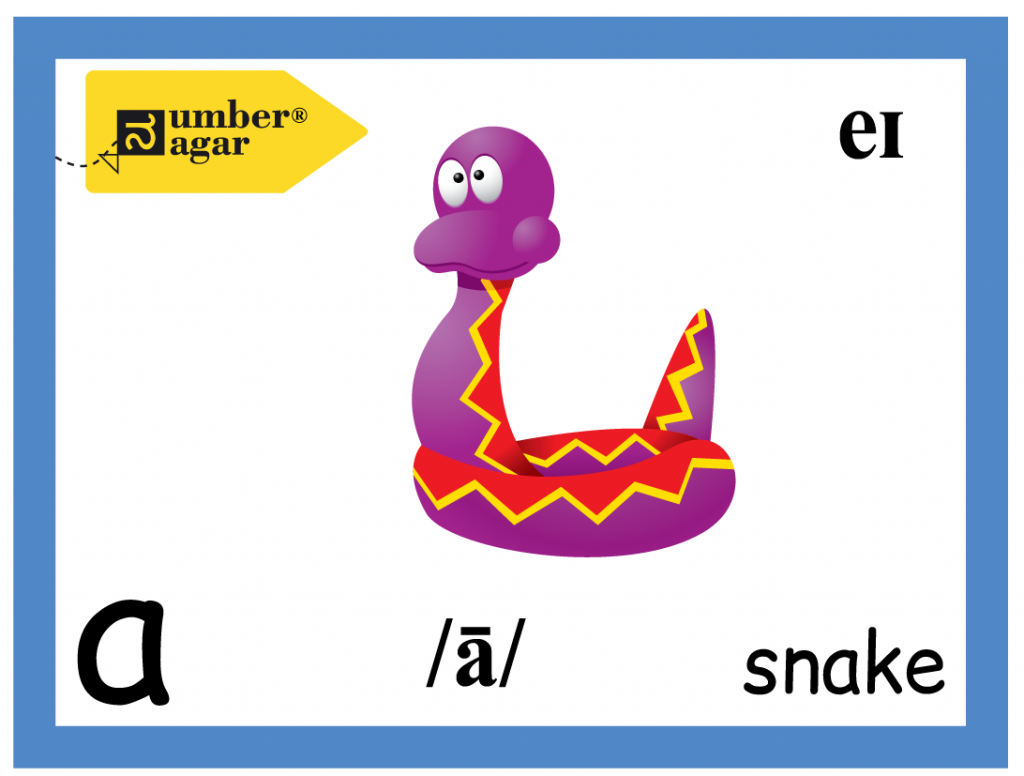Playing and learning
Two weeks ago, I was playing with my niece. Playing and learning go hand in hand in our household. While we were playing, her eyes fell on the Compound Words kit that lay on my table. She wanted to play with it. I gave the set to her and asked her to read out all the words. She started and went through the entire set of 100 words. Some words were new, and she read them slowly with minimal help from me.
Of special interest was the word CAVE. It was new to her. She examined it for a minute, then pronounced it correctly with the ‘long a’ sound. Then without prompting she explained to me that it is the ‘long a’ sound because it has a__e in the spelling – the ‘a dash e’ rule.
I credit this confidence to her mother’s coaching, her Montessori training, and her experience with NumberNagar® Phonics Kit.
Later, she applied her learning of the same rule to RATTLE – another new word for her. This is one of the few words with which I helped her. I explained to her that the rule applies only when there is a single letter between a and e.
Learn it right the first time
The incredible thing about this experience is that the power of learning concepts right the first time. When a child learns basic concepts right at an early age, they are equipped to build on that knowledge. My niece is an early user of the NumberNagar® Phonics Kit and she shows all the signs of an independent reader. The Phonics Kit and the Phonics method focus on attaining mastery. This is achieved through a systematic approach of introducing concepts and rigorous practice. Knowing the rule and applying it to new words is evidence of this learning method in action.
The ‘a dash e’ rule
The rule says that when a is followed by a consonant and then an e (at the end of the word), a makes the long vowel sound. This is also called the magic e rule. This rule also holds good for the other four vowels.
Examples: snake, cake, bake, gate, brake, game, made, sale

What was my learning?
My niece never fails to delight me. She is also a brilliant and adorable teacher. I have written earlier about this too. This time, she taught me that all she needs is my attention. She can learn on her own and I should help her only if she needs it. She was beside herself with joy that she finished reading 100 words on her own. I was ecstatic too.
If we only give them a chance, children learn independently. Moreover, they learn joyfully. As parents and teachers, let us allow them this opportunity. And learn something from them in the process.
Until next time, continue to stay curious!
Click here to order the NumberNagar® Phonics Kit.
Click here to order the NumberNagar® Compound Words Kit.
You can find all articles related to Phonics on our blog here. Did you know that NumberNagar® Phonics method follows the widely acclaimed Orton-Gillingham approach?
Featured image credits: DarkmoonArt_de from Pixabay
Dr. Soumya Sreehari
Latest posts by Dr. Soumya Sreehari (see all)
- To drink water or not to drink – that is the question - 11 June 2021
- Puzzles for fun and learning - 28 May 2021
- A questioning mind is a thinking mind - 14 May 2021
- Play and learn having fun with words - 7 May 2021
- 4 lessons to learn from the Montessori method - 30 April 2021


Brilliant 👏
Thank you, Akhila!:-) Please continue reading and sharing your thoughts.